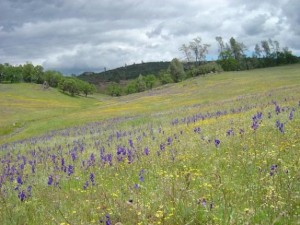Warmer, Drier Winters are Shrinking California’s Wildflower Diversity

DAVIS, Calif., June 22 (UPI) — Scientists have made the case that animals (including humans) are negatively affected by climate change. But don’t forget about plants!
[one_fourth]
[/one_fourth][three_fourth_last]
New research suggests grasslands in California are being reshaped by global warming — and that wildflower diversity is one of the most visible casualties.
A new study by researchers at the University of California, Davis blames a series of drier, warmer winters on wildflower species loss in California. The findings are based on the 15 years of observations by botanists monitoring 80 wild grassland plots at Northern California’s McLaughlin Reserve.
“Our study shows that 15 years of warmer and drier winters are creating a direct loss of native wildflowers in some of California’s grasslands,” Susan Harrison, a professor in the Department of Environmental Science and Policy, said in a press release. “Such diversity losses may foreshadow larger-scale extinctions, especially in regions that are becoming increasingly dry.”
Not surprisingly, the least drought-resistant species have fared the worst over the last decade-plus. And researchers say that reversing the trends will be difficult, maybe near-impossible, given the likelihood of drought in the coming decades.
Similar trends have been found in the Mediterranean region of southern Europe, suggesting semi-arid regions are likely to be some of the first regions were biodiversity is significantly affected by climate change.
The new research was published in the journal PNAS.







